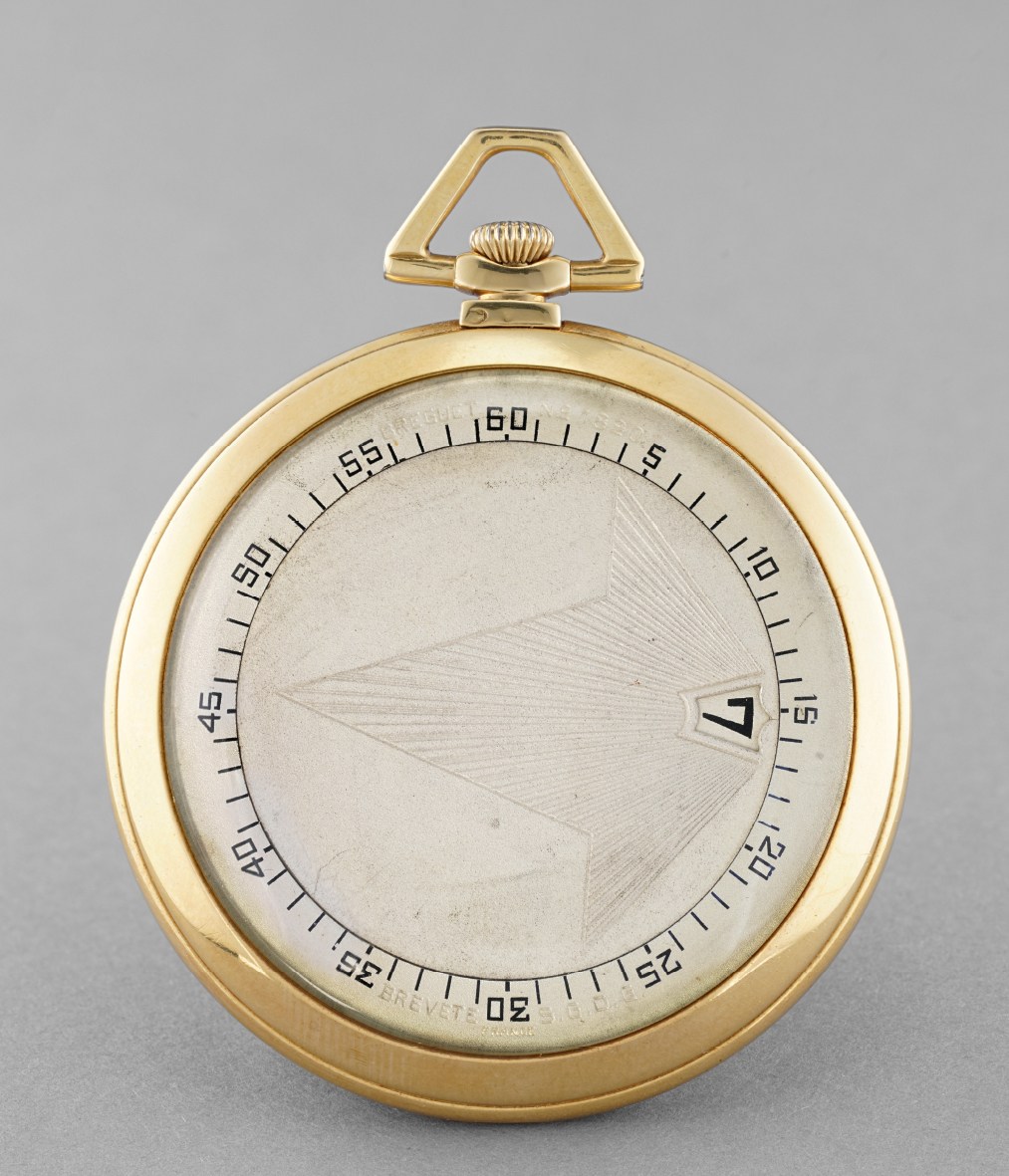



Full-Cataloguing
An epitome of the Art Deco era, Breguet made these jump hour watches in both pocket and wristwatch form from about the mid-20s til the mid-40s.
One genius watchmaker was responsible for the rise of jump hour watches during that era, Robert Cart, who made these movements for the likes of Gübelin, Vacheron Constantin and of course Breguet.
The present Breguet’s central dial rotates in 60 minutes to indicate the minutes which are indicated via an aperture on the rotating dial jumps when on the twelve o’clock mark.
Even though Swiss born, Abraham Louis Breguet established himself as one of the world’s greatest watchmakers in France and his successors were extremely proud of this French heritage, as such, the dial, movement and case are inscribed with the word France. An interesting twist is the BREVETE S.G.D.G inscribed on the dial meaning the movement was patented but the responsibility of the French government was waived in the event the patented object was not functioning as it should (Sans Garantie Du Gouvernement).
The present watch is a perfect child of a period of intense creative liberty and a must have for the collector of alternative time displays.
Breguet
Swiss | 1775Established in 1775 by Abraham Louis Breguet, widely considered the greatest watchmaker of all time, the storied brand continues to thrive in the modern era, creating exceptional high-end watches as the Swatch Group's premier prestige brand. Some of the most important and lasting inventions in watchmaking are attributed to Abraham Louis Breguet, including the tourbillon, shock resistance and the use of hammers and gongs employed in nearly all minute repeating watches made since.
Eighteenth and nineteenth century Breguet pocketwatches are especially sought-after by collectors, and many of them were made for the elite of European society, including Napoléon and Marie Antoinette. Key wristwatches from the twentieth century include oversized dress watches, two-register chronographs, triple calendars and Type XX aviator's chronographs made for the French military and civilians.